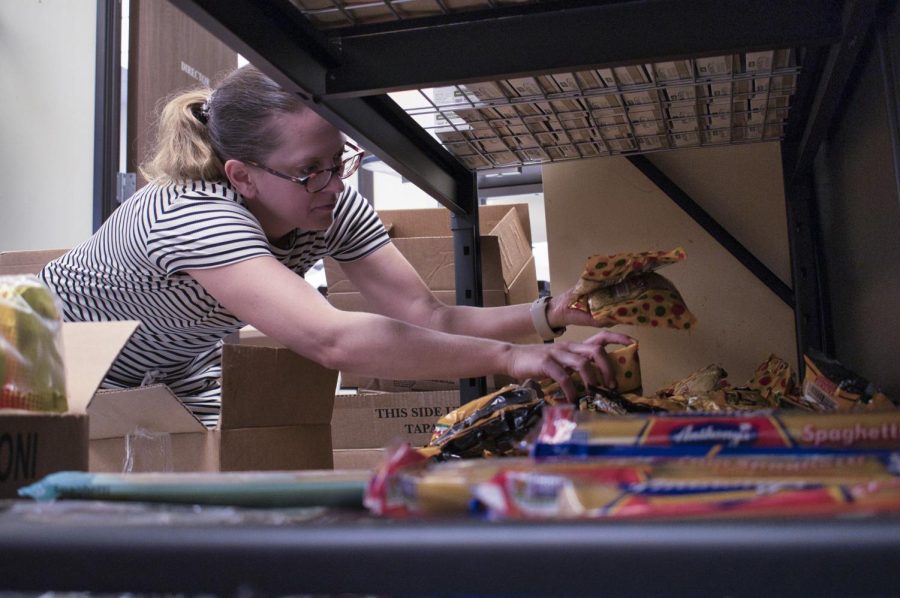City College’s Wake Campus opened their first food pantry on Tuesday, Sept. 13, in a new collaboration with the main campus.
The Santa Barbara Food Bank, a local non-profit, used various community resources to supply students with a selection of free food items.
Judith Smith-Meyer, a food bank representative, emphasized the excitement felt among employees upon expanding their reach to Wake campus.
“It really serves families throughout our community…beyond the stereotypical student demographic,” Smith-Meyer said. “We recognize how hard it is to make ends meet here in Santa Barbara…We want to help [students] achieve goals, make ends meet, and become who they want to be.”
The availability of food on campus is considered essential to students’ overall health and success. The School of Extended Learning’s Acting Dean, Jeanette Chian, explained that when students are fed, and when food insecurity is reduced, students are able to perform better.
“We try to meet them where they are,” she said.
In the first week of operation, students were eligible to pick up four free items.
“This week is just for testing out,” food pantry employee, Aransasu “Zazu” Magallenes, said. “We’re just trying to see how many people come by.”
Magallanes reports that around 30 students visited the pantry each day on average in the first week. While the number of attendees did not grow significantly over the rest of the month, students who came once to the food pantry often returned.
“It’s always the same people who come in already,” said Diana Román, a student worker.
Each student who enters the food pantry carefully examines the available items before making their selections. Among the most popular choices are diet staples—rice, beans, cereal, and fresh produce.
“These are adults,” Magallenes laughs.
She says snack and convenience items are far more popular on the main campus.
After the first week of operations, limits on food items changed to reflect students’ choices. Each shelf, holding a selection of food items, was affixed with a small label on which a maximum amount of food selection was neatly typed. While the limit for grains and canned goods rose to two or three choices per shelf, fresh produce was available in unlimited amounts.
Coincidently, the top food choice of most college students was remarkably unpopular on Wake campus. Boxes of ramen packages sat untouched on the pantry shelves, ignored entirely by students. Magallenes and Román explained that they planned to transfer the boxes to the main campus, where ramen was nearly always out of stock.
When restocking, food pantry employees fill out an online form reporting their needs to the Santa Barbara Food Bank. After carefully assessing inventory, they request new food for the next week to be delivered on Fridays.
Jamie Diggs, the food bank’s partner services manager, coordinated the effort to supply Wake’s food pantry.
“They reached out to me, and I made it happen,” Diggs said.
Despite success in the food pantry’s first few weeks of operations, obstacles lie ahead. The small space and few employees limit the pantry’s hours of operation, making it difficult for students who attend classes later in the day to visit. The food pantry currently closes at 4 p.m., and many students attend class after 5 p.m. Current employees expressed hopes to expand the food pantry staff to better serve the needs of Wake Campus students as the semester progresses.










![Milton Alejandro Lopez Plascencia holds a flag showcasing the United States and Mexico on Feb. 7 in Santa Barbara, Calif. “It’s heartbreaking to see what is happening all across the country,” Lopez Plascencia said. “I [want] my voice to be heard by the community.”](https://www.thechannels.org/wp-content/uploads/2025/05/MGSImmigration-1-1200x800.jpg)




